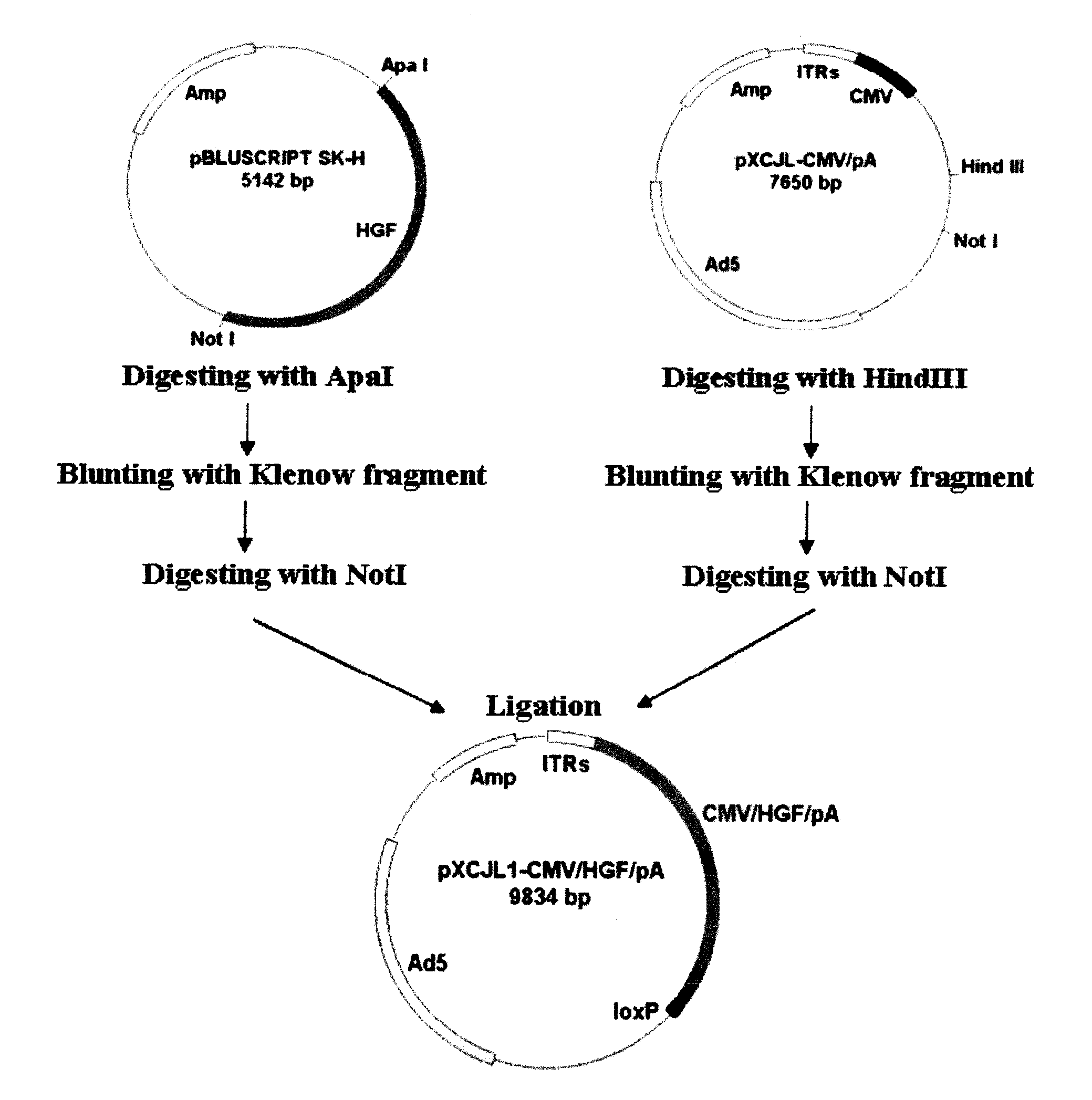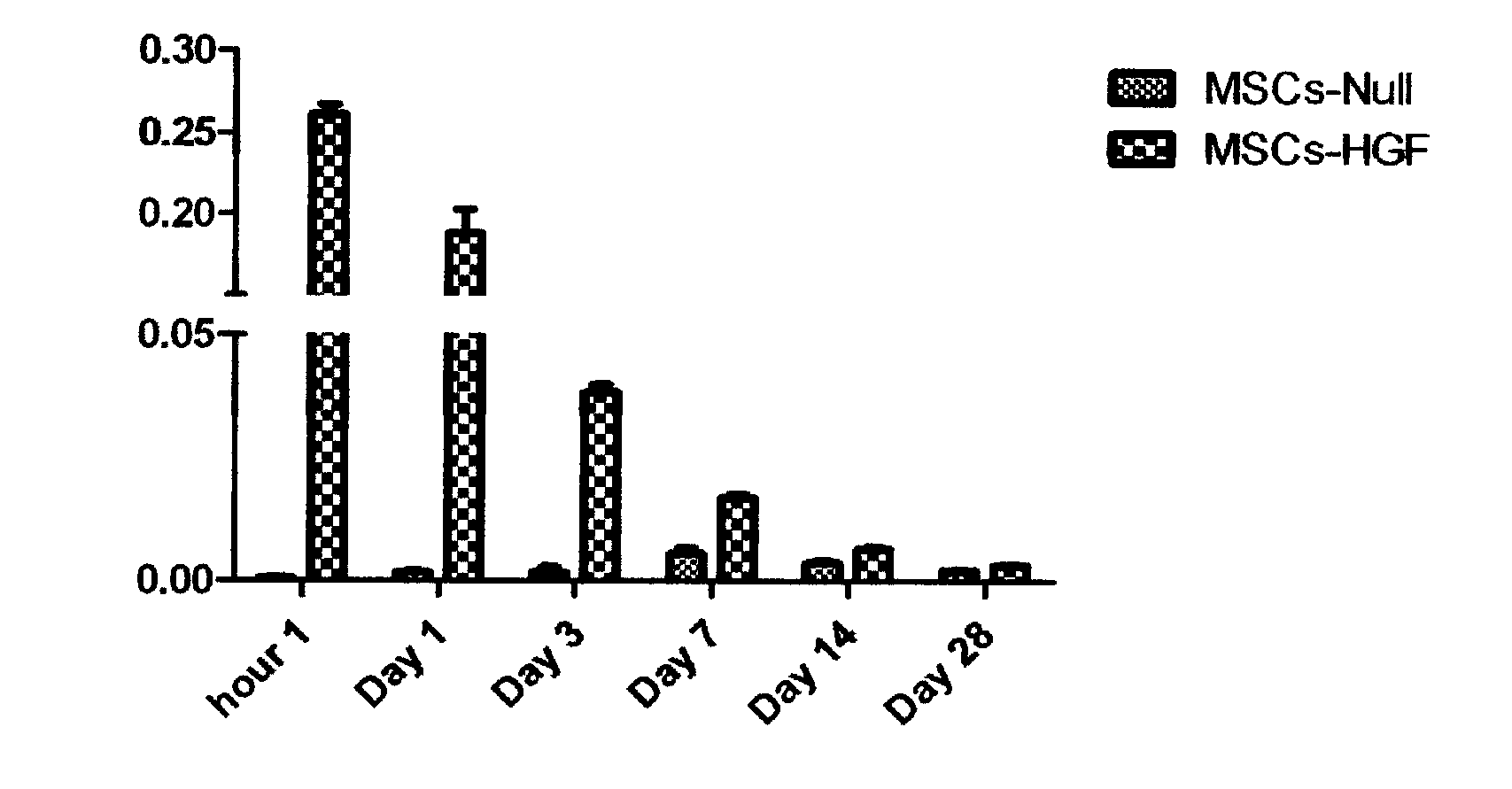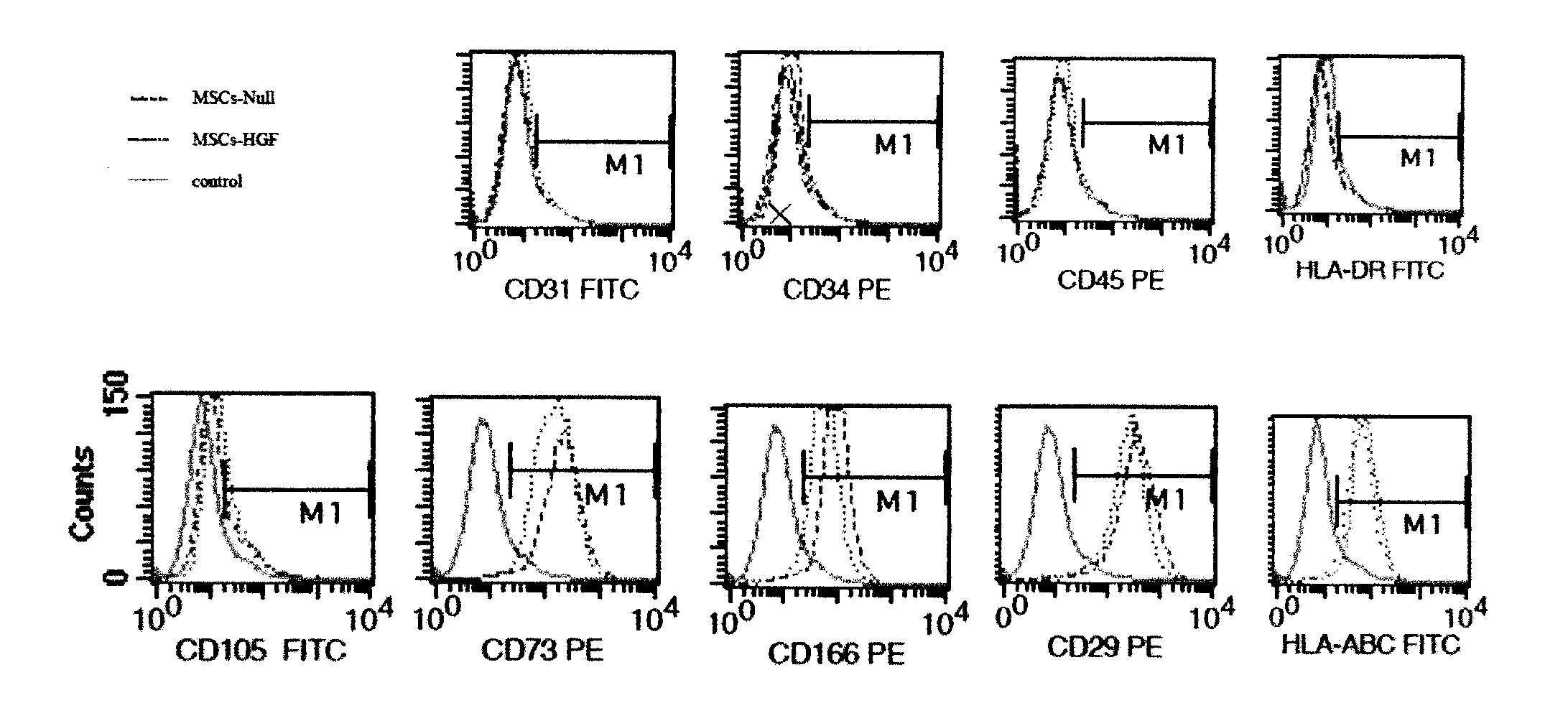Application of gene modified mesenchymal stem cell in pulmonary fibrosis treatment
A technology of mesenchymal stem cells and gene modification, applied in the fields of biotechnology and gene therapy, can solve the problems of complex structure of recombinant HGF and the inability of cells to play anti-inflammation, anti-apoptosis, and promotion of proliferation
- Summary
- Abstract
- Description
- Claims
- Application Information
AI Technical Summary
Problems solved by technology
Method used
Image
Examples
Embodiment 1
[0033] Preparation and purification of embodiment 1 recombinant adenovirus-hepatocyte growth factor (Ad-HGF)
[0034] The method is to clone the human HGF gene of the target gene into the multiple cloning site of the shuttle plasmid pXCJL1-cmv / pA to obtain pXCJL1-cmv / pA-HGF; It carries out intracellular homologous recombination, and obtains recombinant adenovirus Ad-HGF by packaging in HEK293 cells. After correct identification at the genomic level, amplification, purification, and titer determination are performed.
[0035] (1) Construction of the shuttle plasmid pXCJL1-cmv-HGF:
[0036] Firstly, the hepatocyte growth factor cDNA was amplified from the human placenta cDNA library by PCR method, and the PCR product was cloned into the BamHI and SalI restriction sites of pBluescript SK (pSK) vector, named pSK-HGF. After the plasmid pBLUESCRIPTSK-HGF was digested with restriction endonuclease Apa I, the end was blunted with the large fragment of DNA polymerase Klenow, and then...
Embodiment 2
[0042] Example 2 Isolation, cultivation, expansion and gene modification of bone marrow mesenchymal stem cells
[0043] (1) Isolation and culture of bone marrow mesenchymal stem cells
[0044] Heparin-anticoagulated normal human bone marrow was filtered with a 1ml syringe, added PBS to dilute the bone marrow, mixed well, carefully added the bone marrow cell suspension on the surface of the lymphocyte separation medium Ficoll according to the ratio of 1:1, centrifuged at 1600rpm for 30min; sucked out Dilute the mononuclear cell layer with twice the volume of PBS, mix well, and centrifuge at 2000rpm for 8min; wash the cells once more with PBS; resuspend the cells with complete medium (α-MEM+10%FBS) 5 cells / cm 2 The density was divided into flasks for culture; after 72 hours, the medium was changed to remove unattached cells. Change the medium every 3-4 days thereafter. When the cells grew to 80% confluence, they were trypsinized and passaged, which was recorded as the first p...
Embodiment 3
[0058] Example 3 HGF Modified MSC Biological Performance Detection
[0059]48h after MSCs were infected with 150MOI Ad-HGF, the expression level of HGF was detected by ELISA; the changes of cell surface molecules were detected by flow cytometry; the changes of cell proliferation ability were detected by Dy670 dye method;
[0060] (1) Detection of HGF expression level
[0061] After Ad-HGF infected MSCs, the expression of HGF was detected by ELISA. The results showed that after Ad-HGF infection, the expression level of HGF gradually increased until the 7th day (see attached figure 2 shown).
[0062] (2) Effect of HGF modification on MSC cell surface molecules
[0063] Flow cytometry was used to detect the expression of various surface molecules CD29, CD73, CD166, HLA-AB, CD105, HLA-DR, CD31, CD34 and CD45, and the results showed that infection with Ad-HGF had no effect on the expression of MSC surface molecules ( as attached image 3 shown).
[0064] (3) Effect of HGF mod...
PUM
 Login to View More
Login to View More Abstract
Description
Claims
Application Information
 Login to View More
Login to View More - R&D
- Intellectual Property
- Life Sciences
- Materials
- Tech Scout
- Unparalleled Data Quality
- Higher Quality Content
- 60% Fewer Hallucinations
Browse by: Latest US Patents, China's latest patents, Technical Efficacy Thesaurus, Application Domain, Technology Topic, Popular Technical Reports.
© 2025 PatSnap. All rights reserved.Legal|Privacy policy|Modern Slavery Act Transparency Statement|Sitemap|About US| Contact US: help@patsnap.com



